Kyle Magnuson
Ancient Mountain Fortresses in Central Korea
Ancient Mountain Fortresses in Central Korea (On tentative list)
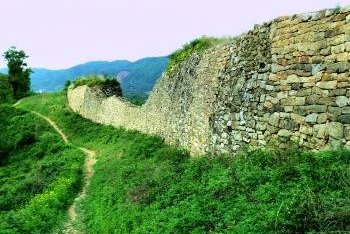
Anyone familiar with Korea and its long history will know there are an incredible amount of fortresses in Korea. Current estimates number 2,400 total fortresses in Korea. (Offcourse varying degrees of intact fortresses remain, some only being earthen fortresses) Nearly every national or provincial park in Korea has at least one sanseong (fortress). There are basically three types of fortresses in Korea: Fortress to protect the Royal Family - Fortress to protect a town/city/village - Mountain Fortress (this being by far the most numerous). The fortresses included in this nomination are unique in the fact that all are located in the border region of Korea's ancient three kingdoms: Silla, Baekje, and Goguryeo. Nearly all 7 fortresses in this serial nomination were held, rebuilt, or restored by two or more dynasties.
I visited 3 of the mountain fortresses included in this nomination.
1) Samnyeon sanseong (Boeun), 2011
2) Sangdang sanseon (Cheongju), 2011
3) Ondal sanseong (Danyang), 2016
Samnyeon sanseong is unique in that it is very much a ruined fortress and was not rebuilt by the Joseon dynasty (This fortress is a Silla fortress, and was previously nominated individually on Korea's previous T-list) Perhaps unfortunately there is a completely rebuilt section of Samnyeon sanseong, and it stands out; also the fortress is kind of out of the way. (no tourist facilities) Sangdang sanseong is a much more common mountain fortress in Korea, heavily restored early in the Joseon Dynasty this fortress is mostly intact, with some newly renovated sections. Beautiful location …
Keep reading 0 comments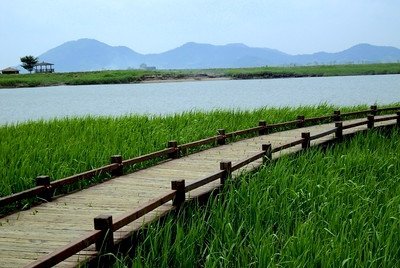
Upon visiting Suncheon Bay in 2011, I quickly came to the conclusion that these highly diverse tidal flats have potential for world heritage status. As one of the most beautiful natural places in Korea (in my opinion), I am now interested in visiting more "Getbol" in Korea. Besides Suncheon, there are 5-6 other major tidal flat locations in southwestern Korea (even more have been protected recently leaving potential for a future expansion). Suncheon Bay is pristine, picturesque and the most well-known. Inevitably, this results in higher developments in tourism infrastructure to manage larger numbers of visitors. The tidal flats are home to a diverse range of species, from various types of crabs, mudskippers, to a multitude of common and rare birds. Suncheon Bay was registered on the Ramsar wetland list in 2006, Muan Getbol in 2008, Seochon Getbol in 2010, Gochang - Buan were registered jointly in 2010, and lastly Jeongdo (Sinan) Getbol in 2011. Species like the Spoon-billed Sandpiper and Oriental stork are amongst the numerous endangered waterbirds that inhabit this ecosystem. The Seochon Tidal Flats do not seem original to the identified components in the 2010 TWHS, but does seem to be included now. I visited this tidal flat region on a trip to Gunsan, but was largely unaware of its importance in comparison to sites like Suncheon Bay. Most recently, the Gochang and Buan Tidal Flat has been included in the Jeonbuk West Coast UNESCO Global Geopark.
In 2019 the Migratory Bird Sanctuaries Along the Coast …
Keep reading 0 comments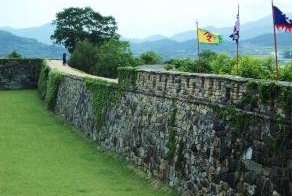
Naganeup village has two defining characteristics. It is not a village of the aristocracy, but one of the common people, with thatched roofs and simple stone walls. The second important detail is the village is protected by a fortress that encloses the village built to protect the inhabitants from Japanese soldiers or pirates. People still live in the village, and some of the homes have been almost completely redone or refurbished, but numerous preserved homes remain. As well as some of the town government buildings.
There is a pretty good chance this village will be inscribed (eventually) because it is the only one if its kind left in Korea. A century ago there were dozens of such villages, but now there is only Naganeupseong. Strolling around the small alleyways within the village is a highlight, and to get a better sense of the layout of the town, walk around the relatively small fortress wall. If you enjoyed visiting Hahoe or Yangdong, you would also enjoy a visit to Naganeupseong, while appreciating the subtle differences.
Not being centered around an aristocratic clan makes this historic site very different from most well-preserved hanok villages in Korea. Its defensive fortifications are also a necessary precaution to its location in Jeollanam-do. Naganeupseong is actually closer to Fukuoka Island in Japan than Seoul.
Keep reading 0 comments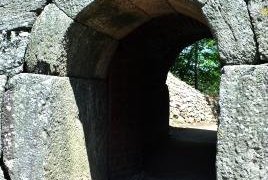
The fortress is impressive, the gates certainly stand out, and the view of Seoul from the South is stunning on a clear day. The fortress today is primarily from 1624, but fortifications have been located here since Baekje and Silla in the 7th century.
The fortress played a major role during the Joseon dynasty, acting as the protective barrier of Southern Seoul, and more importantly as a temporary palace and headquarters for the king in times of peril. (In which purpose it was used on occasion) Namhansanseong itself is one of the better preserved fortresses in Korea. The walls are higher than most, while many of the gates are particularly formidable. The primary rebuilding phase is largely a response to the Japanese invasion of 1592, and the probability of Manchu incursions (which did occur in the 1630's).
I did notice one section of the wall was being almost completely rebuilt, but for the most part, the fortress is highly authentic. (Probably more 'original' than Hwaseong Fortress). The outer wall fortress, which was taken by the Manchu forces is largely in ruins.
There are a select few original wooden buildings, but most have been rebuilt or restored over the centuries. The Temporary Palace is the primary focus for restoration. Getting to the fortress is not particularly hard, there is a (somewhat) nearby subway. Buses also drop off visitors within the lower interior of the fortifications. This is one of the representative fortresses of Korea. If you enjoyed Hwaseong, you will surely …
Keep reading 0 comments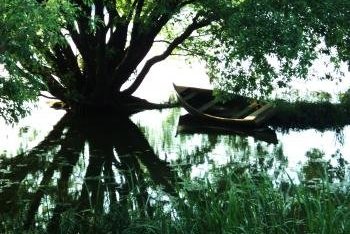
I was pleasantly suprised by Upo. I honestly did not know what to expect. No one in Korea I knew ever visited Upo marsh, while only a few had even heard of it. The Upo wetland is really out of the way for most travelers, located deep in the Gyeongsangnam countryside. I highly recommend upon arrival renting out a bike, which is conveniently located at the entrance of the marsh. The marsh is beautiful, and you will undoubtably see wildlife. I primarily saw cranes and ducks. The marsh is somewhat small in comparison to most natural nominations, but I would not be suprised if Upo became a WHS. The site was recently registered on the Ramsar wetland list. Visiting the site in the early evening was particularly worthwhile.
If you are planning to visit Haeinsa Temple I would suggest Daegu as a hub destination. From Daegu, you can visit Haeinsa, Daegaya Tombs, Dodong Seowon, and Upo Wetland. Which is a nice sample of Korea's Tentative List.
Keep reading 0 comments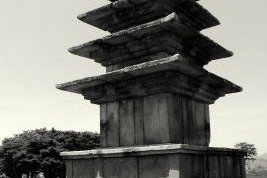
The two most important sites in this serial property are the Tomb of King Muyeong and Mireuksa Temple. The famous tomb, which was discovered intact, became one of Korea's most famous archeological discoveries. The tomb included items from Southeast Asia, China, and Japan. The interior of the tomb can only be visited by an onsite replica. Like Kaesong and Gyeongju, this WHS is made up of mostly tombs, fortresses, and temples. The fortress in Gongju and Buyeo are both pleasant walks, but have been partially rebuilt in later historical periods. I am very interested in visiting the Naesong City Wall, which (to my knowledge) was never rebuilt following the Three Kingdoms period.
While Gongju and Buyeo are very easy to visit, it gets more complicated in Iksan. First and foremost if you visit Iksan hopefully it's by car, as these sites are spread out and only few of them are accessible by bus. I visited Mireuksa temple site, and the Wanggung-ri Palace site. These historic areas really feel like archeological sites. There are few remains, but fascinating nonetheless. Interestingly enough the famous and enormous Mireuksa 5-story pagoda (originally 7-story) no longer exists in a sense. Pretty much the only major remain at the site, Mireuksa pagoda has been dismantled to strengthen the base and back portion. So what you see is a huge building over a largely disappeared pagoda. The original stones are numbered and laid out over an area the size of a basketball court, all properly numbered and …
Keep reading 0 comments
This historic mining town deep in the mountains of Central Slovakia is an interesting site, but since I didn't have much time, I had to content myself with a quick walk around the main square with the Trinity Column and up to the castle. There is a short mining shaft next to the tourist office that gives you a nice impression of the history's mining area.
Keep reading 0 comments
Gebrecherkos Woldegeorgis
In the year 2011, I had the privilege to visit the Siemen National Park. As an Ethiopian this was my dream came true for I was craving to go there at one time. To be honest, it was the most thrilling visit in my life. What is so peculiar of the park is this: it sieges your mentality for good; and as such you don't want to go back to this hectic part of the world, to the cities and towns. It is the right place to worship the savior of the world, to appreciate nature earnestly and to internalize the very reason as to why you are born. Above all it helps you relive from all sorts of routine life. At least, you will stay there for a day or so.
Please, visit this wonderful part of our world and you will be surprised where you are!!!
Keep reading 0 comments
Maybe I'm not doing justice to this place, but I wasn't very impressed by Bardejov. I just had about an hour to spend there, so I could just walk around the main square. The square, the town hall, and the big church are rather nice, but I'm really not sure if they are that special. There doesn't seem to be a lot to see or do here except taking a stroll around the square.
Keep reading 0 commentsKlaus Freisinger
Wooden Churches of the Slovak Carpathians
Wooden Churches of the Slovak Carpathians (Inscribed)

These 8 churches are spread all across Slovakia, and most don't seem to be easily accessible. I went to the pretty town of Kezmarok, very close to Levoca and Spis Castle. The Articulate Church there is a very impressive building (more so from the inside than the outside) and is well worth visiting. It is one of the Protestant churches making up the site, which also consists of Catolic and Greek Orthodox ones. Maybe I'll go see one of those in the future.
Keep reading 0 comments
This extention encompasses Mount Zion just outside the city walls near the Zion Gate. This is one of two ajacent mountains, the other being the Olive Mountain, both of great religious importance and outside current WHS boundaries. The Olive Mountain is of much higher cultural significance and of great archaeological value, unlike Mount Zion. However, Mount Zion is within the currently recognized borders of Israel and the Olive Mountain is not.
Mount Zion features a few significant sites, the most important of which is the Room of the Last Supper and King David´s Tomb both in the same complex. There several historical cemeteries on the slopes of the mountain.
Keep reading 0 comments
the trip was for Mount Qincheng for my second day in Chengdu , i rented a mini van to head there .
Going there ,We were diverted to the rear of the mount , since the road heading to the front of MT Qincheng was close, i talked with the lady in the ticket counter in the Rare entrance and she told me that the view in the front was totally different on the scenery at the back, anyway , she said the entrance ticket was cheaper at the back at 20 yuan compare to the front entrance ticket which is 90 yuan , i guess WHS should divide this in to three site, 2 for mount Qincheng ( front and back ) and 1 for Dujianyan , and i should be back again next time, since the front entrance was not open.
The mount was a nice climb , there is two cable cars heading to the top ( the peak is white cloud temple) , Try to buy the ticket of the cable car going up and down , since u will not have enough time coming down if you are NOT staying over night in Mt Qincheng ,(If you decided to buy the ticket going up only and suddenly wanted to buy the cable car ticket coming down, u will be charge double coming down ,on the counter there on top. so that means u will be paying three rides per sector, You have no option nor …
Keep reading 0 comments
It's a required field trip for all grade four studends in primary school. I went there when I was a fourth grader and later each time my mom thaught grade four (if she didn't take them to Plitvice which is an alternate trip) Either way I've seen this magnificent monument so many times and each time was as if I'm looking at it for the first time.
Keep reading 0 comments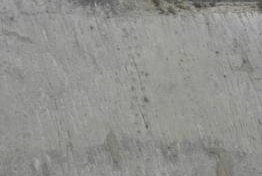
The Cal Orck'o (Quechua for “Chalk Mountain”) is one of three dinosaur track-sites that are competing for WH status. In 2009 I had already visited one of them, the Dinosaur Ichnite sites in northern Spain. A disappointing visit, as the tracks there are very difficult to distinguish.
This site near the Bolivian capital Sucre however is the biggest in its kind. Over 5000 imprints and 462 trackways from various different animal species have been found. They were discovered in 1994, when they were exposed by erosion on a wall disused by the nearby cement factory. The wall is 1500 meters wide and 130 meters at its highest, and contains 7 layers of track and fossil sediments. They are 68 million years old. This location used to be a shore of a former lake, where the animals left their imprints in the mud.
I got there on the touristy “Dino-truck”, that leaves three times a day from Sucre’s main square. A return ticket costs 17 bolivianos, entrance to the site 30 and another 5 for bringing your camera – so 52 bolivianos (5,20 EUR) in all, quite a European price. When you arrive after about 20 minutes driving from the center of Sucre, it looks like you’re entering the adjacent huge cement factory. The wall with the imprints is impressive as well: one almost flat surface, as if a mountain is sawn in half.
I went up right away to the viewing platform, from where you can study the wall with …
Keep reading 0 comments
I am the first to write a review about this WHS - no wonder since it sees only ca. 2500 visitors a year. The Reserved Zone of Manu National Park can be reached from Cuzco with a couple of tour companies. I went there on a 5-day tour with the well-organized and recommended Pantiacolla Tours. It is possible to fly in and out (there´s a tiny grass airstrip at the Yuni Lodge), but I choose to drive down from Cuzco for 1.5 days through the cloud forest until the port of Atalaya at the Madre de Dios River. This way you´ll see the landscape change dramatically, and there are already plenty of birds to see along the road including the Andean cock-of-the-rock and the quetzal.
The tour company had put "binoculars" at the no. 1 spot of the packing list. And indeed they proved to be essential, as the wildlife here is not easy to see with the naked eye. The rainforest is very thick, and many of the species have disguising colours.
We navigated the Manu River for hours, always being the only ones on the river. Both white and black caiman are a common sight here, lying around at the river's characteristic beaches. We saw one black caiman about 4 meters long. Also, we happened upon two tapirs scrambling upon the river bank. Tapir is a rare sighting, even scarcer than the jaguar. Unfortunately, we missed out on the latter one during this trip.
On …
Keep reading 0 commentsThe site is completely different from all the sites in India. It is a place where Heritage is a continuity with life and culture closely attached and integrated with landscape. Great experience for one month stay i Februray,2011 to March2011
Also can see in "Friends of Majuli" in FaceBook and Fommers --500 Estrordinary Islands under Sacred Islands. Also D.Nath(2009)- Majuli Island
Keep reading 0 commentsMount Arbel (or Arbel Cliff) is a mountain near the Sea of Galilee with a lovely view of the lake. Apart from this I can hardly see any reason for its inscription. It is, however, of historic significane with Jewish and Druze archaeological sites. It also holds the holiest Druze site. A major reason highlighted in the nomination file is the fact it is the site of the historic battle between the Mameluks and the Crusaderes.
Keep reading 0 comments
It was a fascinating experience on the hill-top. Sometimes you wonder how life was at the hill-top about 80 decades ago before the settlers descended to the present Odode-Idanre. It's usually an experience I won't forget in a hurry each time I visit. I wish there's a functioning hotel at the hill-top though. Would that be a bad idea? I don't think so.
The Idanre Hills undoubtedly deserves to be listed as a world heritage site.
Keep reading 0 comments
oke idanre is a fantastic,,tourist center which is very ok to catch funs,,there are wonders of God there,is a place where you discover that GOD is wonderful ,,i am from idanre am very sure of what am saying,,but what we need there is that our government should invite,investors from abroad to come to help the development of this wonderful center,,,which wil help the country,,and its citizens,,, am very proud to come from this acient city,,,
Keep reading 0 comments
I used to live and study in Freiburg and I enjoyed its picturesque old town a lot. The cathedral is certainly impressive, especially for a town that small. It is gothic but not of imposing grandeur unlike some similar cathedrals. This one always seemed rurally friendly to me. Hardly enough for OUV though.
Keep reading 0 comments